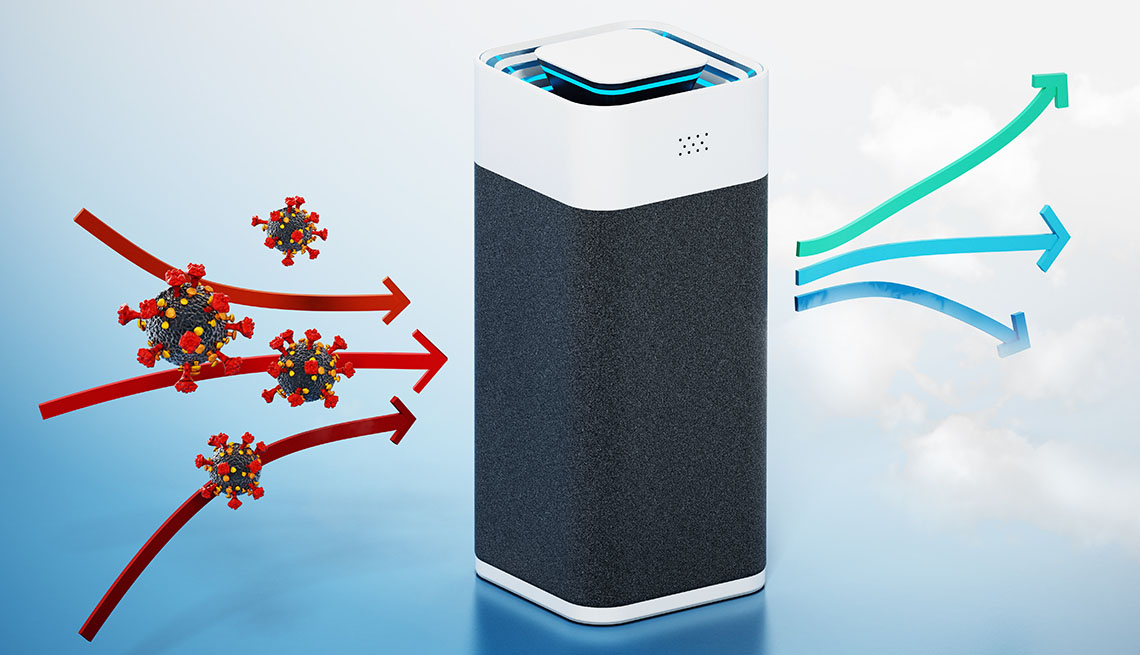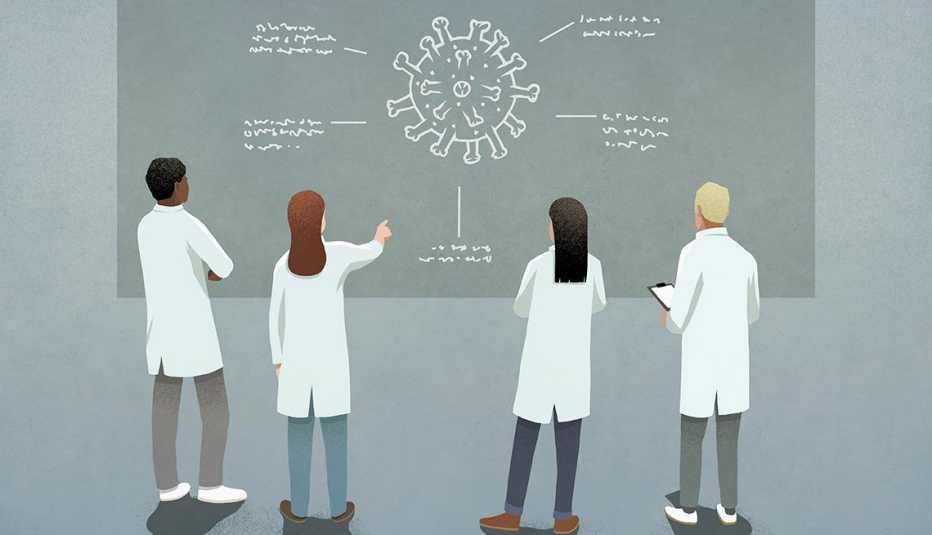AARP Hearing Center
The Centers for Disease Control and Prevention (CDC) has once again updated its guidance on how COVID-19 spreads, this time acknowledging that airborne particles from basic breathing and talking play a key role in virus transmission.
The agency's website now explains that when a person infected with COVID-19 exhales, a mix of larger droplets and smaller particles that contain the virus are released into the air. Gravity pulls the largest droplets quickly to the ground, but the smaller virus-containing particles can stay suspended in the air “for minutes to hours” and can be breathed in by others — even by those who are more than 6 feet away. Previously, the CDC maintained that COVID-19 was thought to only “sometimes” spread this way.
Two other principal modes of transmission are also highlighted in the latest CDC guidance: Splashes and sprays produced when an infected person coughs or sneezes can land on a nearby person's eyes, nose or mouth and get them sick. You can also get COVID-19 if your hands have virus particles on them and you touch your eyes, nose or mouth.
How COVID-19 Spreads
Health officials say COVID-19 spreads by three main ways:
• Airborne particles: Breathing in small virus-containing droplets and particles that have been exhaled by an infected person.
• Splashes and sprays: Having these small droplets and particles land on the eyes, nose or mouth. This can happen when an infectious person coughs or sneezes, for example.
• Direct contact: Touching your eyes, nose or mouth with hands that have the virus on them.
Source: CDC
The importance of good ventilation
Even though our understanding of how the coronavirus spreads has shifted, “the ways to prevent infection with this virus have not,” health officials say. Frequent handwashing is still recommended; so is social distancing and mask wearing in public spaces for people who are not fully vaccinated.
But experts who have long championed for this most recent change say the update really pushes the need for good indoor ventilation to the forefront — especially at a time when schools and offices are bringing people back to meet in person.




































































